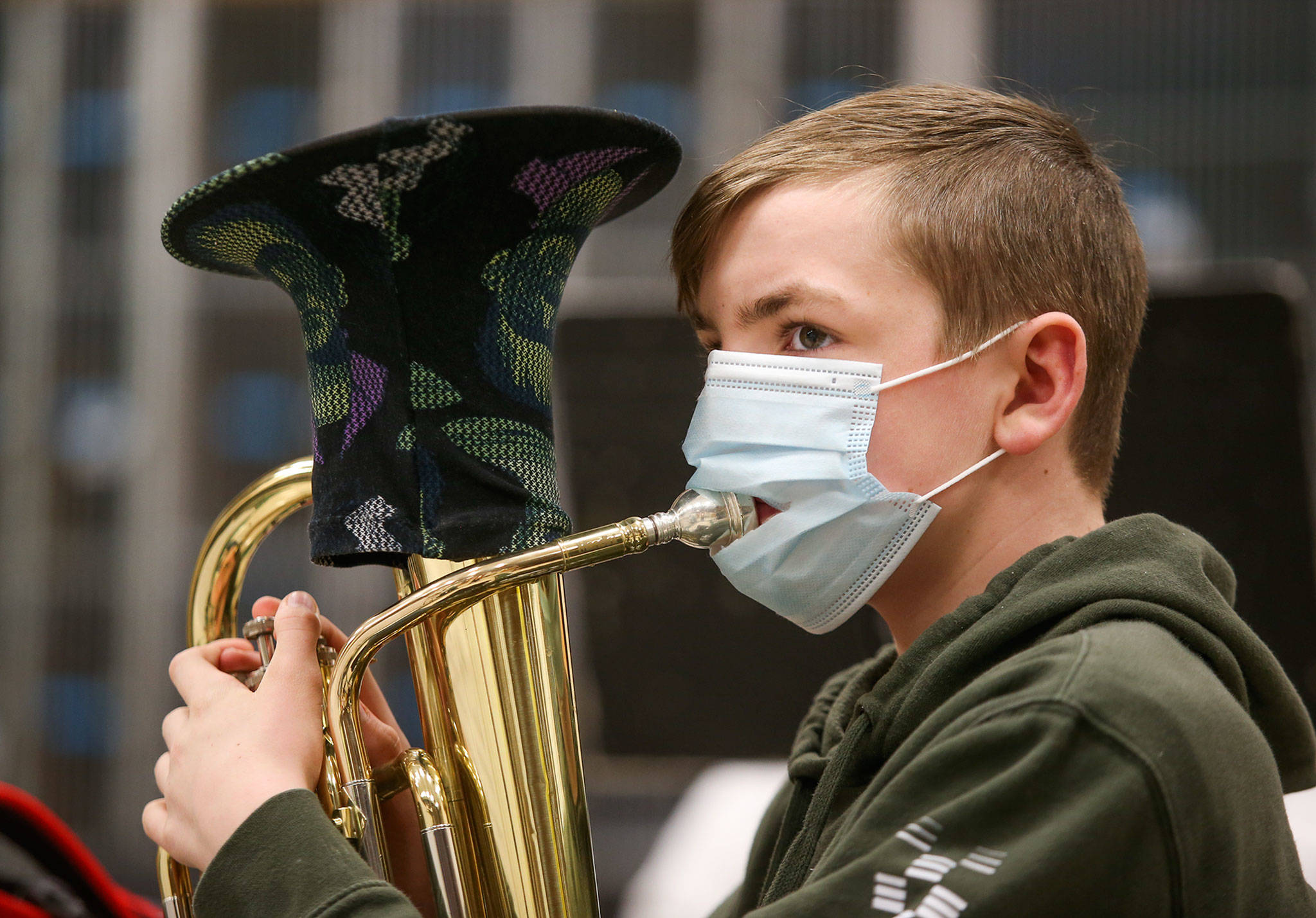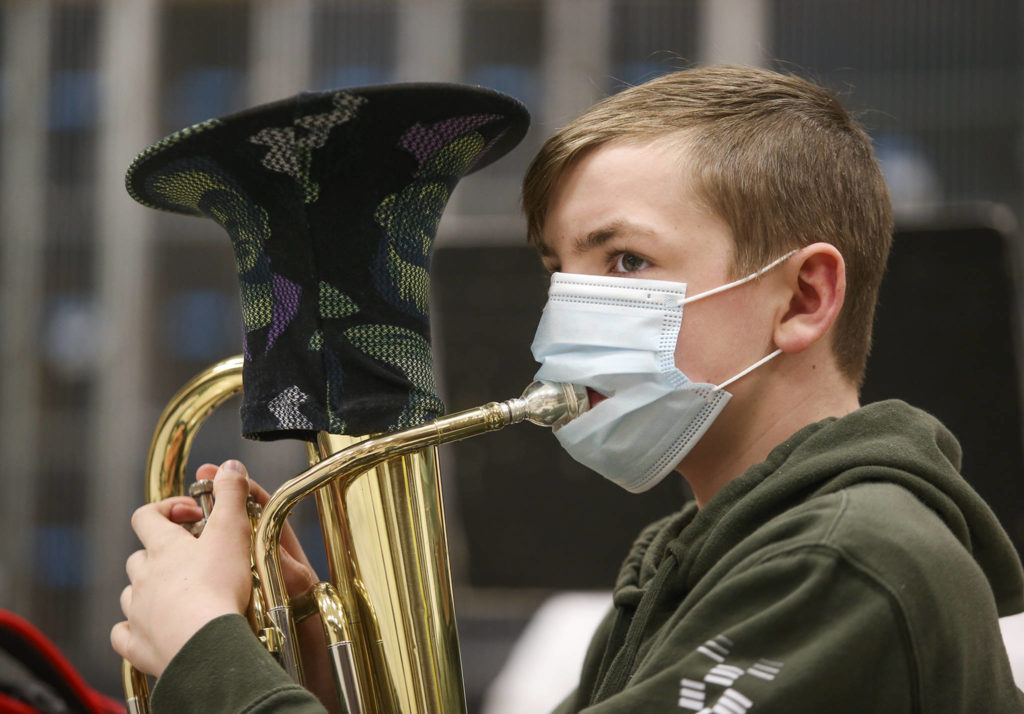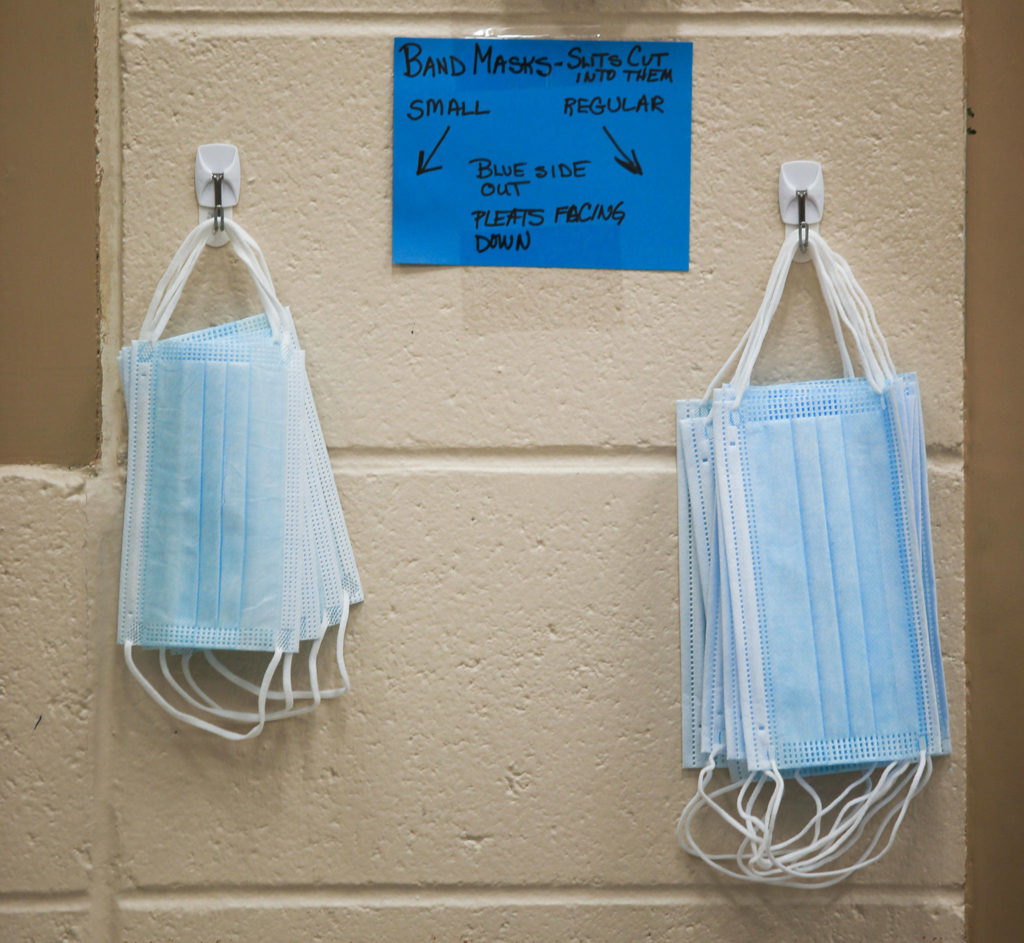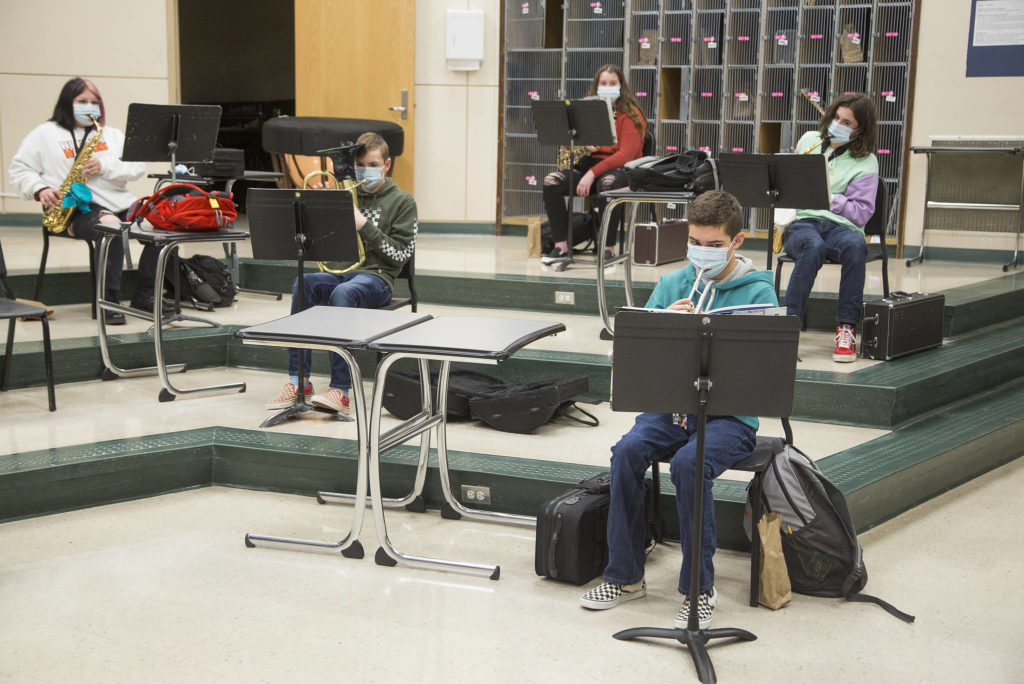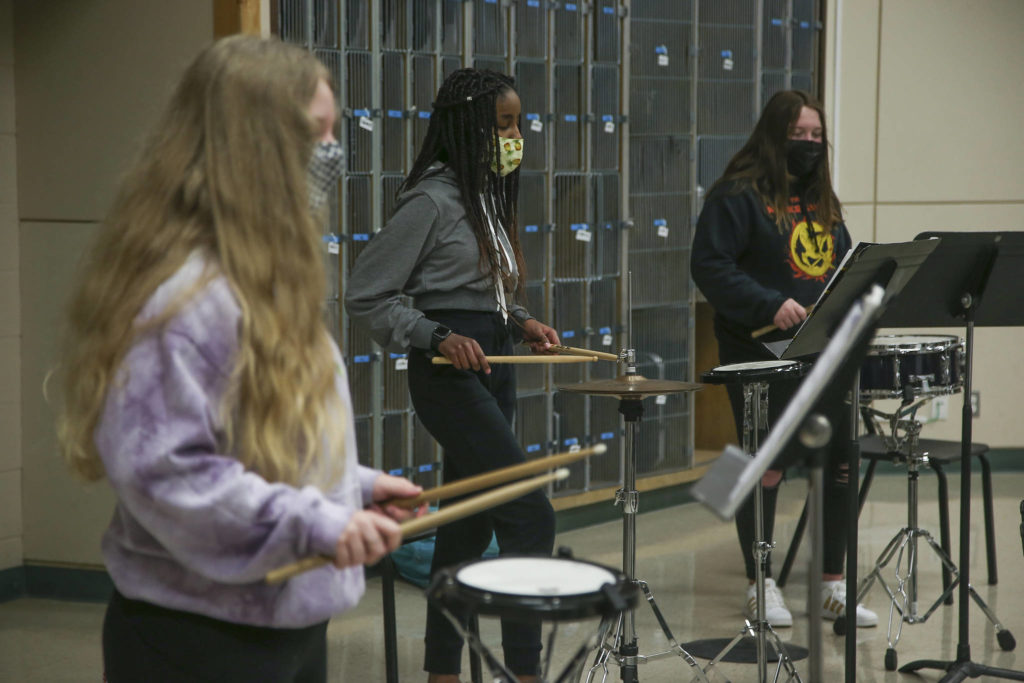ARLINGTON — Bright woodwinds and snappy cymbals echoed off the walls at Haller Middle School. For the first time in more than a year, band students at the Arlington campus were playing together in person again.
The school began transitioning to limited in-person instruction earlier this month, and its band classes are now meeting at 50% capacity.
Students are coming out of a year of remote classes, with varied levels of musical growth over the past year, school band director Kathy Medema said. Some kids had no trouble honing their skills at home. Others struggled to find a place where they could practice at full volume.
“It feels kind of like trying to teach Algebra 1 and calculus to the same group of students,” Medema said. “But we’re making it work.”
Medema’s sixth-, seventh- and eighth-grade band classes meet in person twice weekly. Students are required to stay 9 feet apart and practice for no more than 30 minutes at a time, per state guidelines.
Students are so eager to be back in the classroom that their etiquette and focus seem to have improved, Medema said. Spreading out makes it more difficult for them to chat during class.
Band classes for each grade level at Haller are split in half and meet twice a week. The days that students attend school in the hybrid model are based on bus zoning, not preferred instrument. So one eighth-grade band class might have twelve percussionists, while the other has just one.
Some of Medema’s band students are still thriving despite the challenges. Two eighth-graders were accepted into the Washington Music Educators Association Junior All-State Band in January: Jonathan Hill on tenor saxophone and Rebeca Lara on clarinet.
Over at Edmonds-Woodway High School, eight young musicians were selected for Washington’s All-State and All-Northwest performing groups: Alexander Aaby on baritone saxophone; Braunte Beeks on viola; Nahum Cortezzo on trumpet; Taneli Freeman on clarinet and alto saxophone; Shinhyun Kim on percussion; Talli Kimani on alto saxophone; Sophia McCann on violin; and Nahome Yohannes on tenor saxophone.
Jake Bergevin, the school’s band director, said virtual instruction allowed him to teach students a range of topics that wouldn’t normally fit into the curriculum.
Students have studied composition, arrangements and multi-track recording.
“Usually in a regular band class, I don’t have time for composition assignments. But because we don’t have all these concerts weighing us down, we can be more creative,” Bergevin said. “Their music skills might be static right now, but their creativity within music is expanding some.”
EWHS Jazz Ensemble 1, for example, recorded tunes over virtual video calls.
Courtney Sadoski , an EWHS junior, said she’s enjoyed the topics Bergevin has chosen to teach the class.
“An advantage to remote band would be the fact that we have been learning more about different genres of music (like Brazilian and jazz) and really going in depth into those topics. It’s definitely interesting to learn about,” she said in an email.
As a percussionist, Sadoski said one drawback to remote instruction is not having access to all the different drums and instruments she normally uses in the band room.
Bergevin believes the lull in normalcy has had some perks. He hopes to apply those takeaways as EWHS and other Washington high schools start up in-person band classes again.
“The silver lining is that we can look at the music class as more of an art class,” Bergevin said. “It is an art elective, but during normal times, it’s a rigid and skill-based craftsman-type of an art class. Now, in COVID, it’s become more creative and loose.”
Ellen Dennis: 425-339-3486; edennis@heraldnet.com; Twitter: @reporterellen
Talk to us
> Give us your news tips.
> Send us a letter to the editor.
> More Herald contact information.
